SLAVA MOGUTIN’S POLAROID RAGE
TEXT BY TOM BIANCHI
PHOTOGRAPHY BY SLAVA MOGUTIN

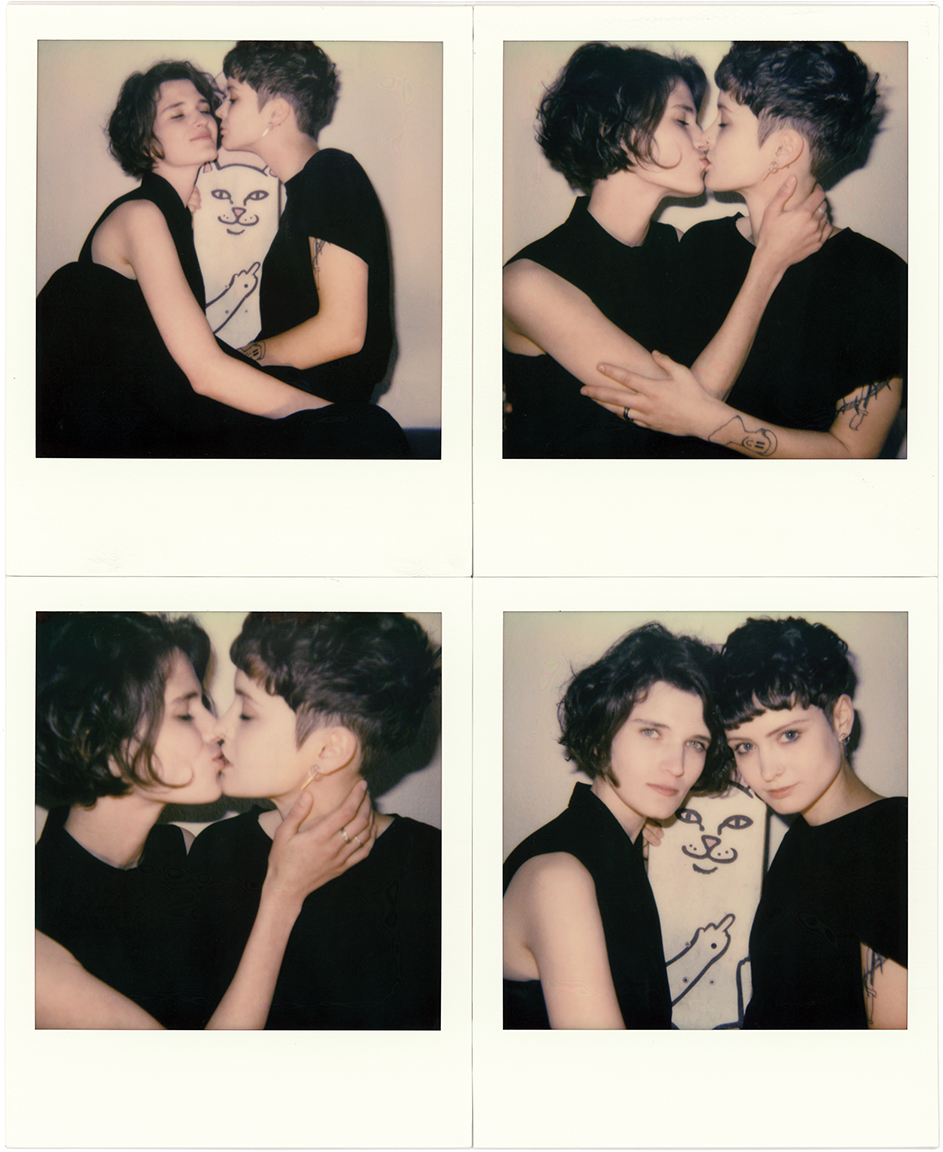
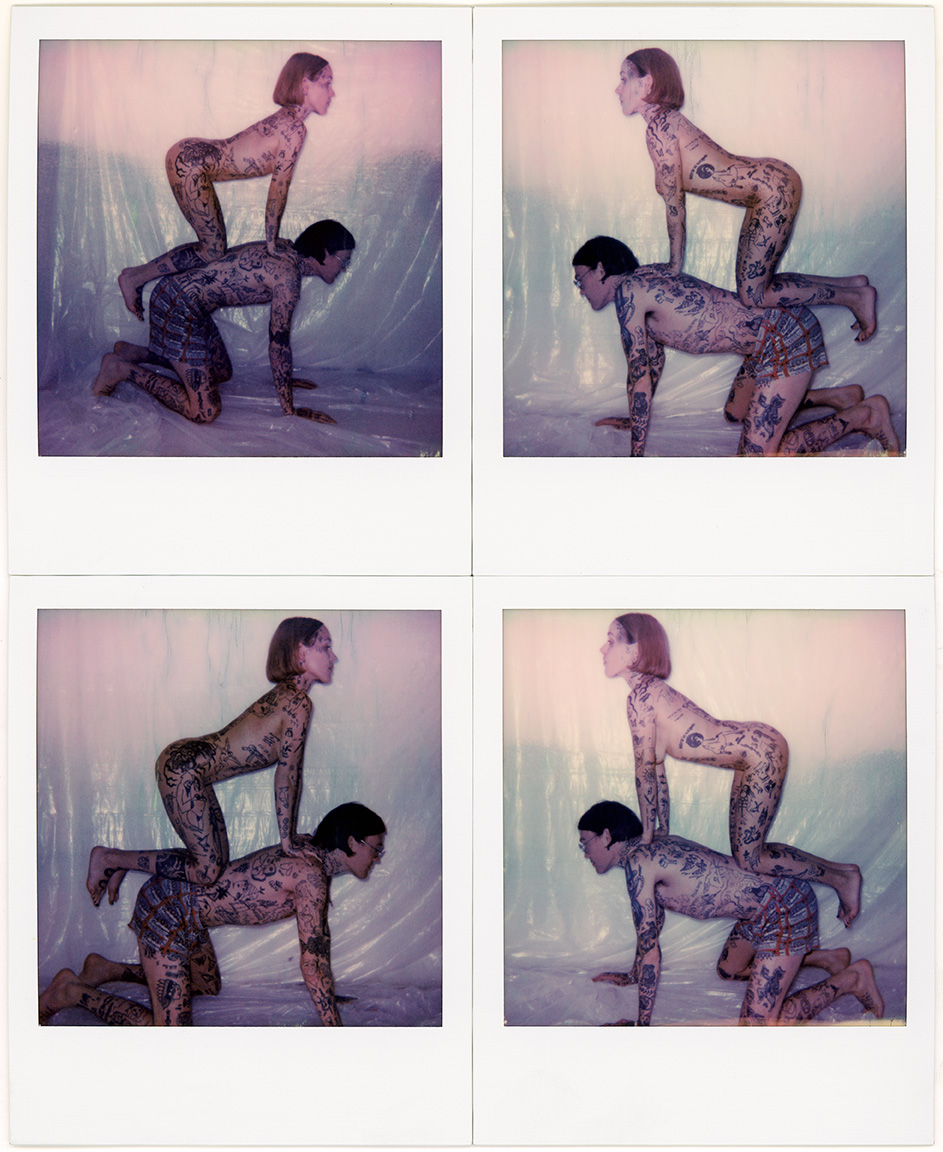
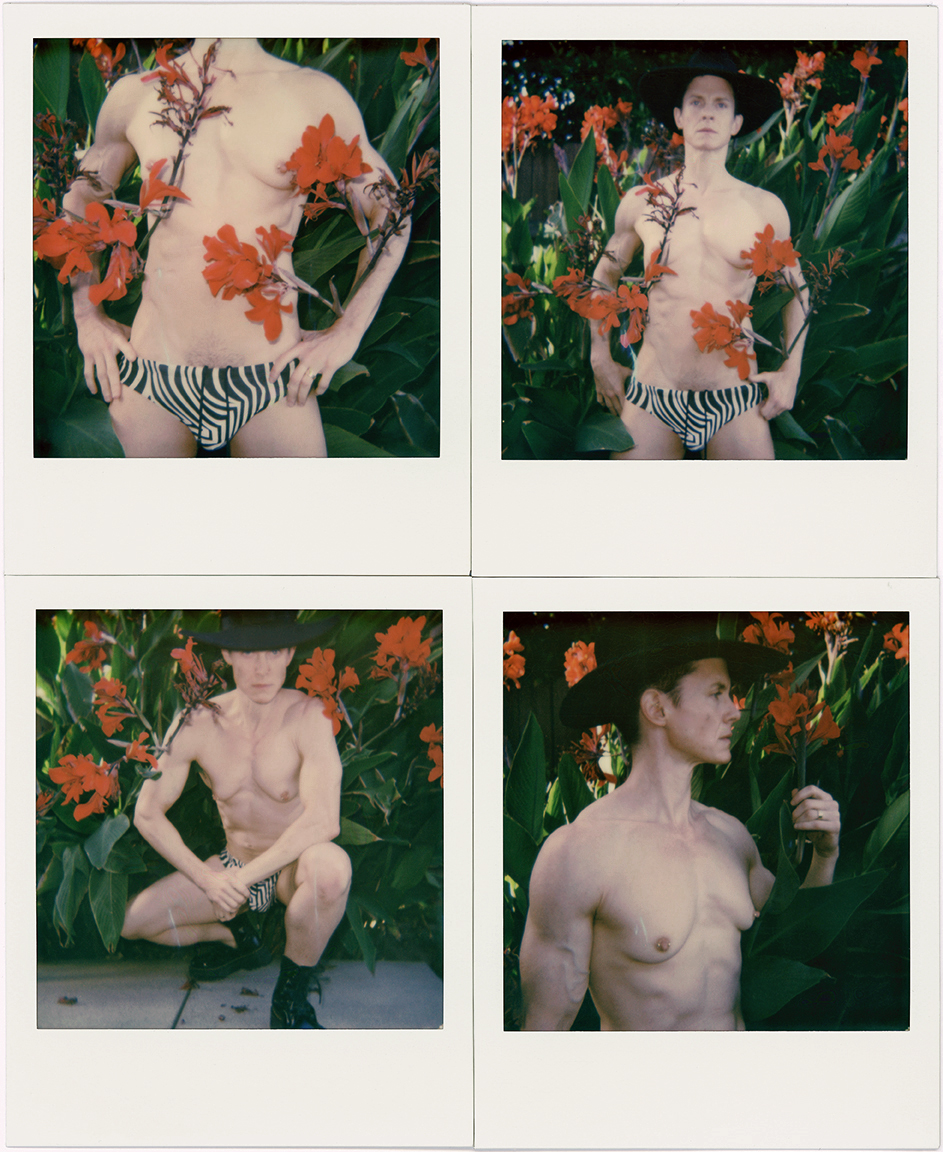
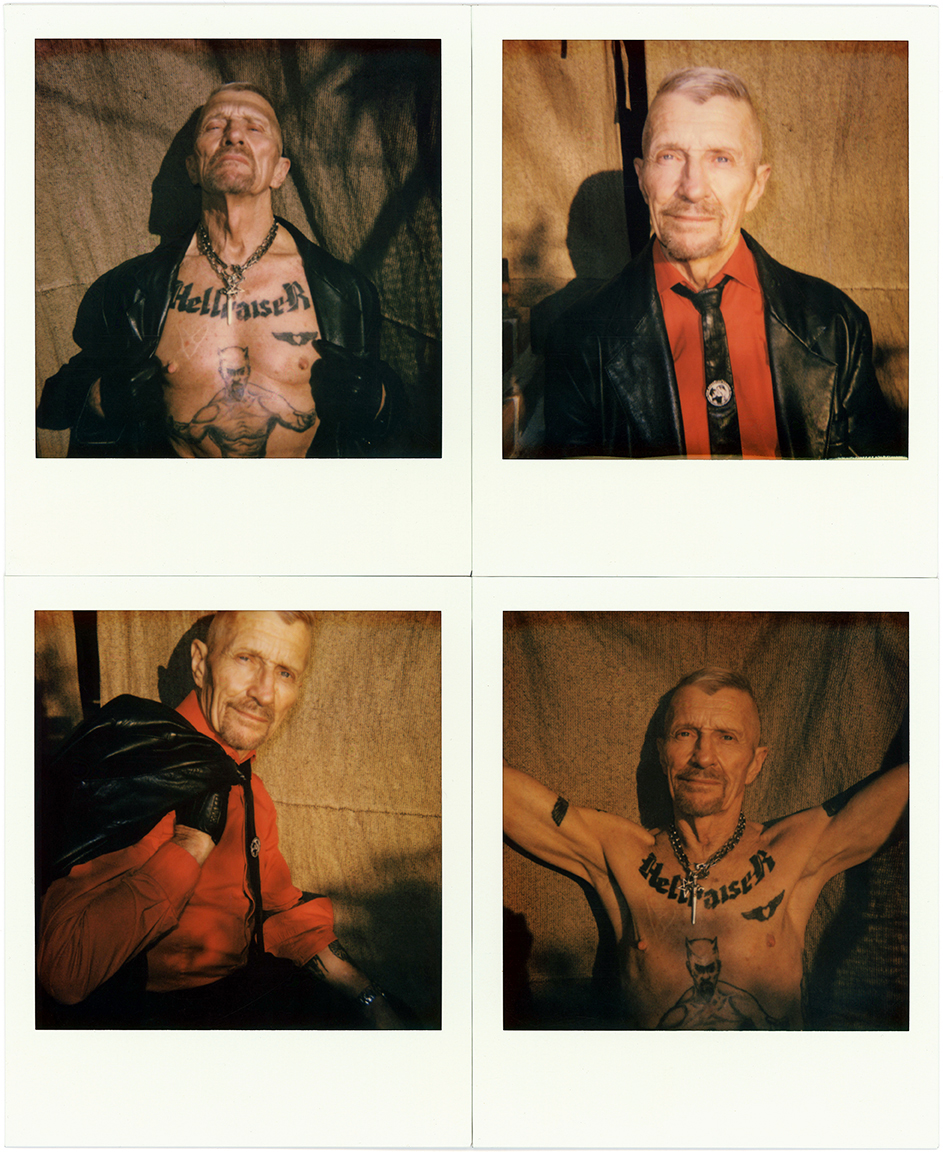
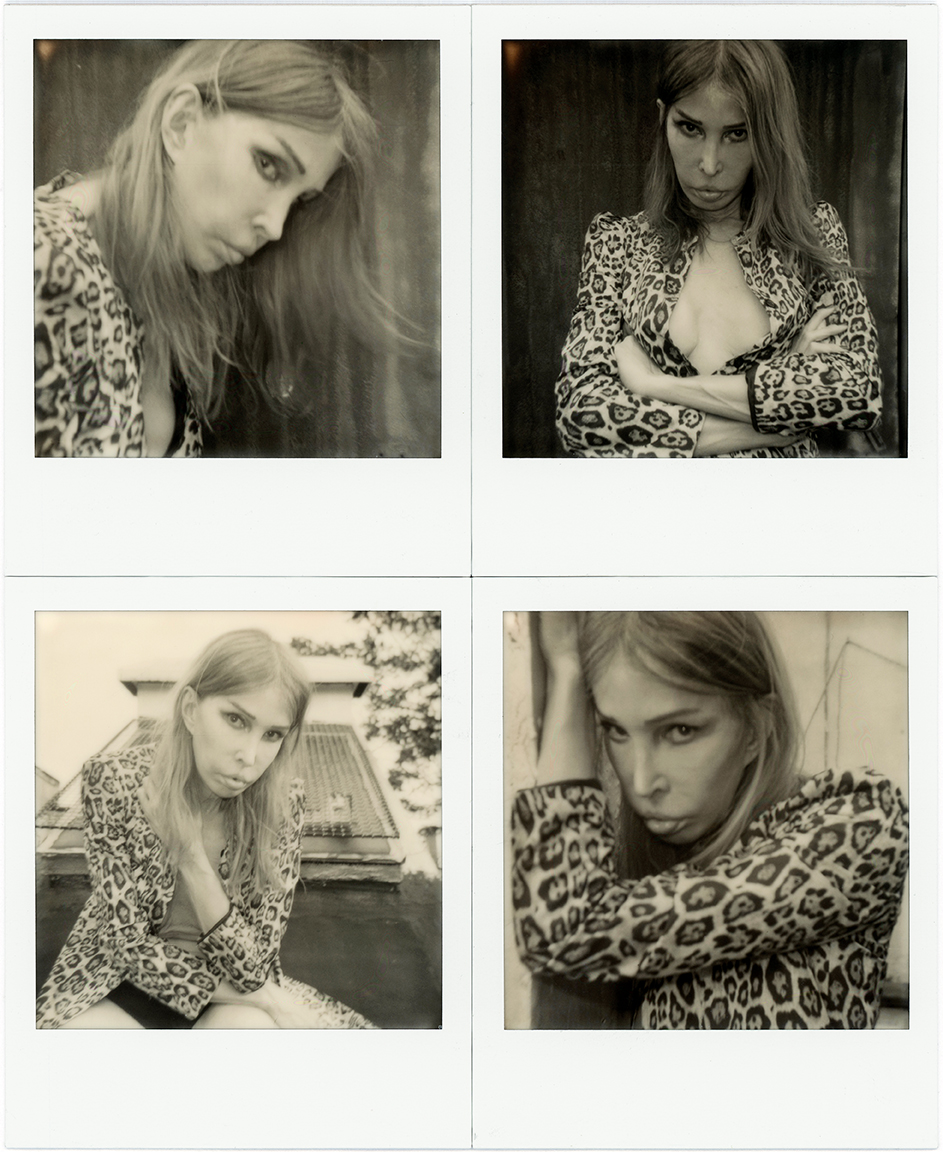
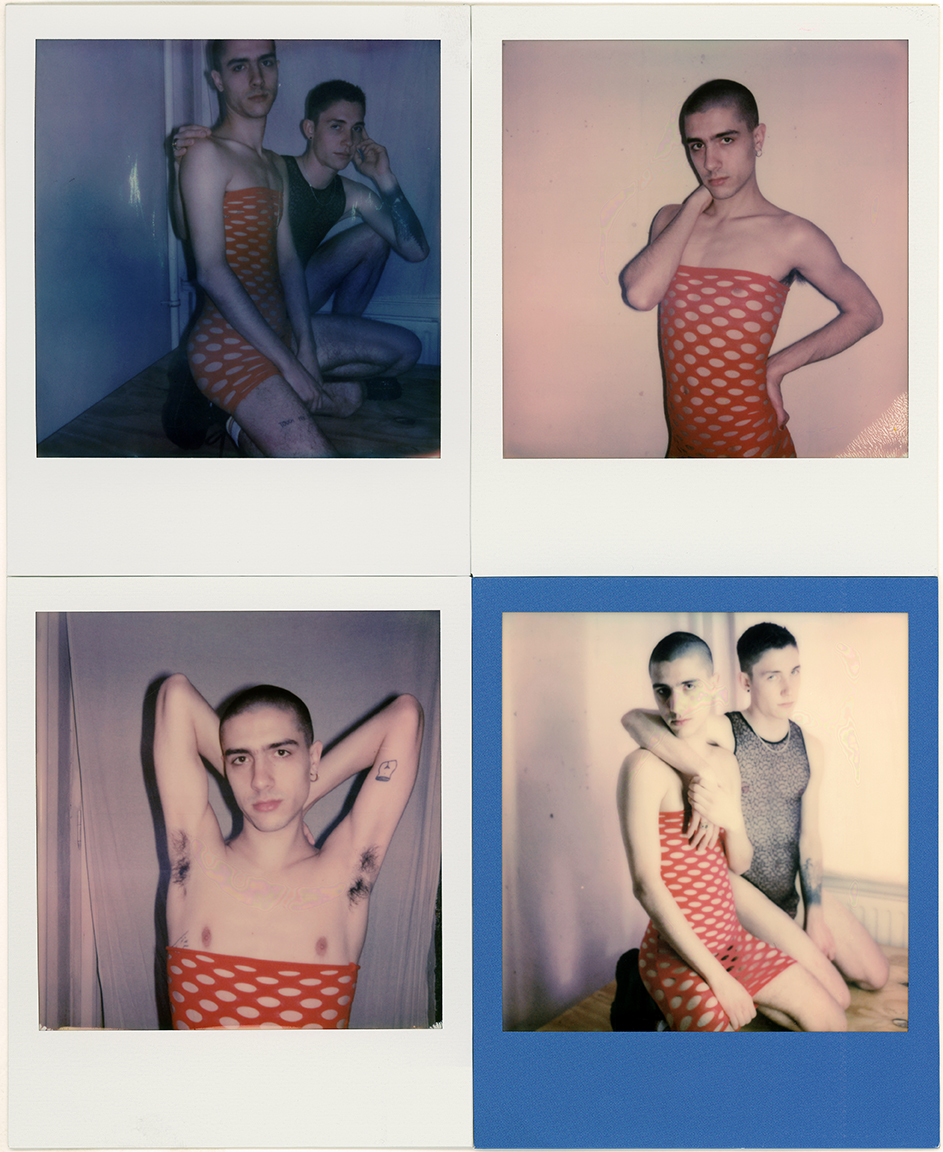
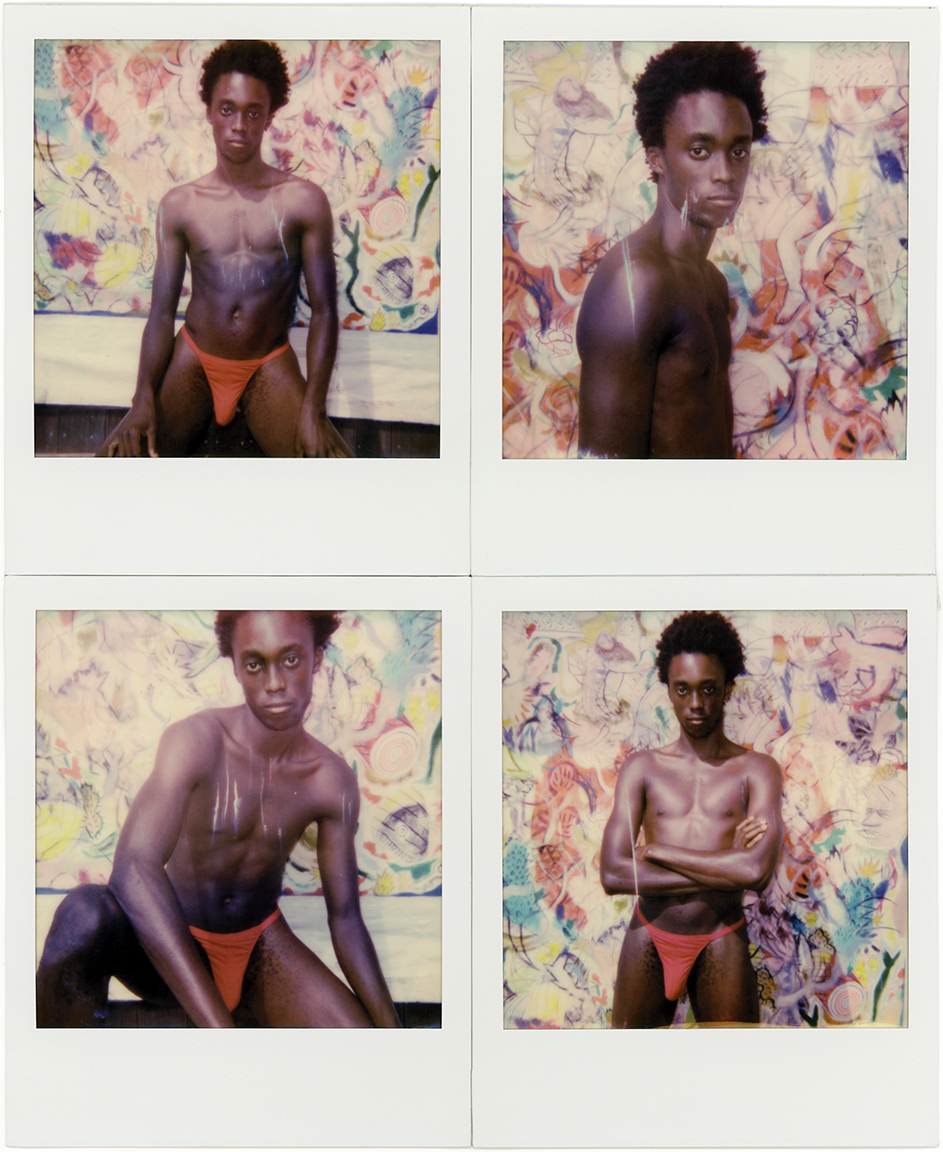
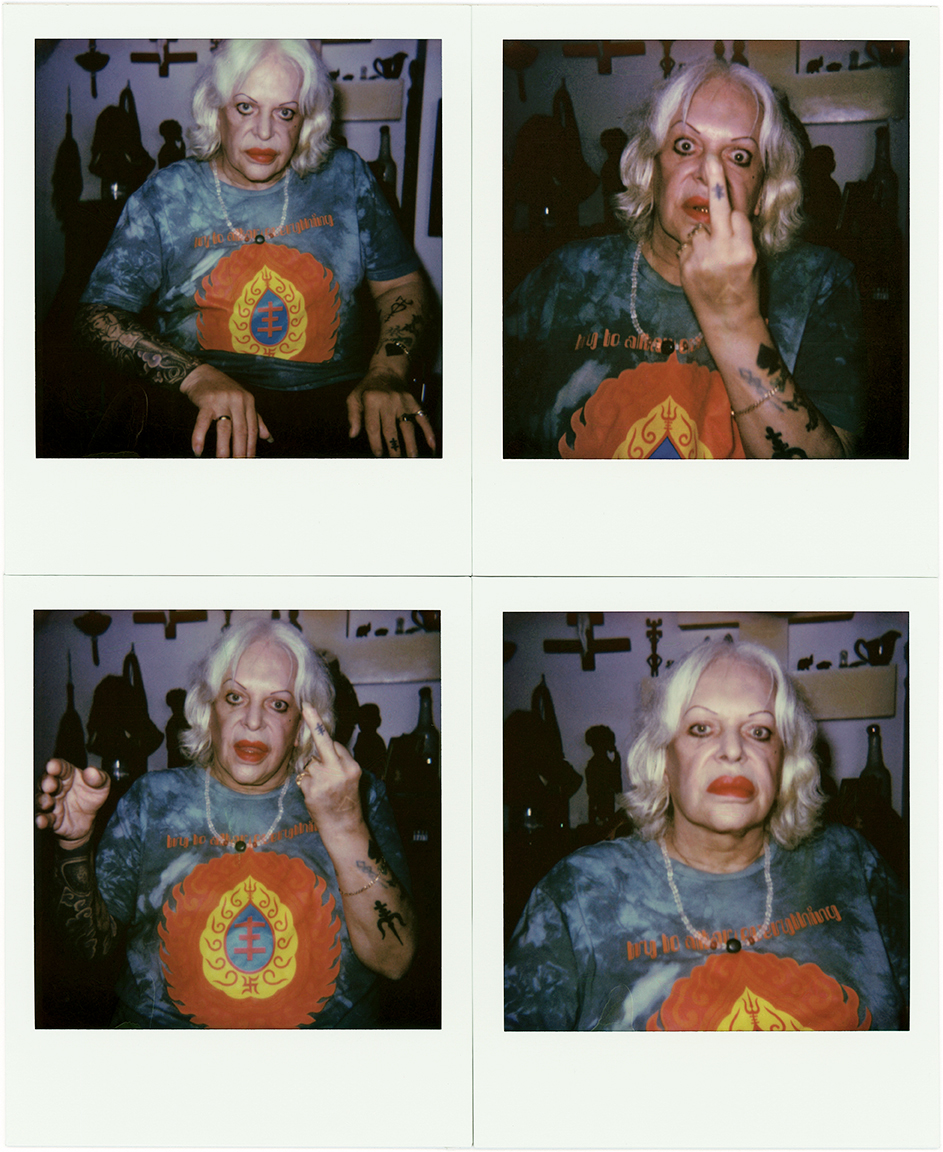
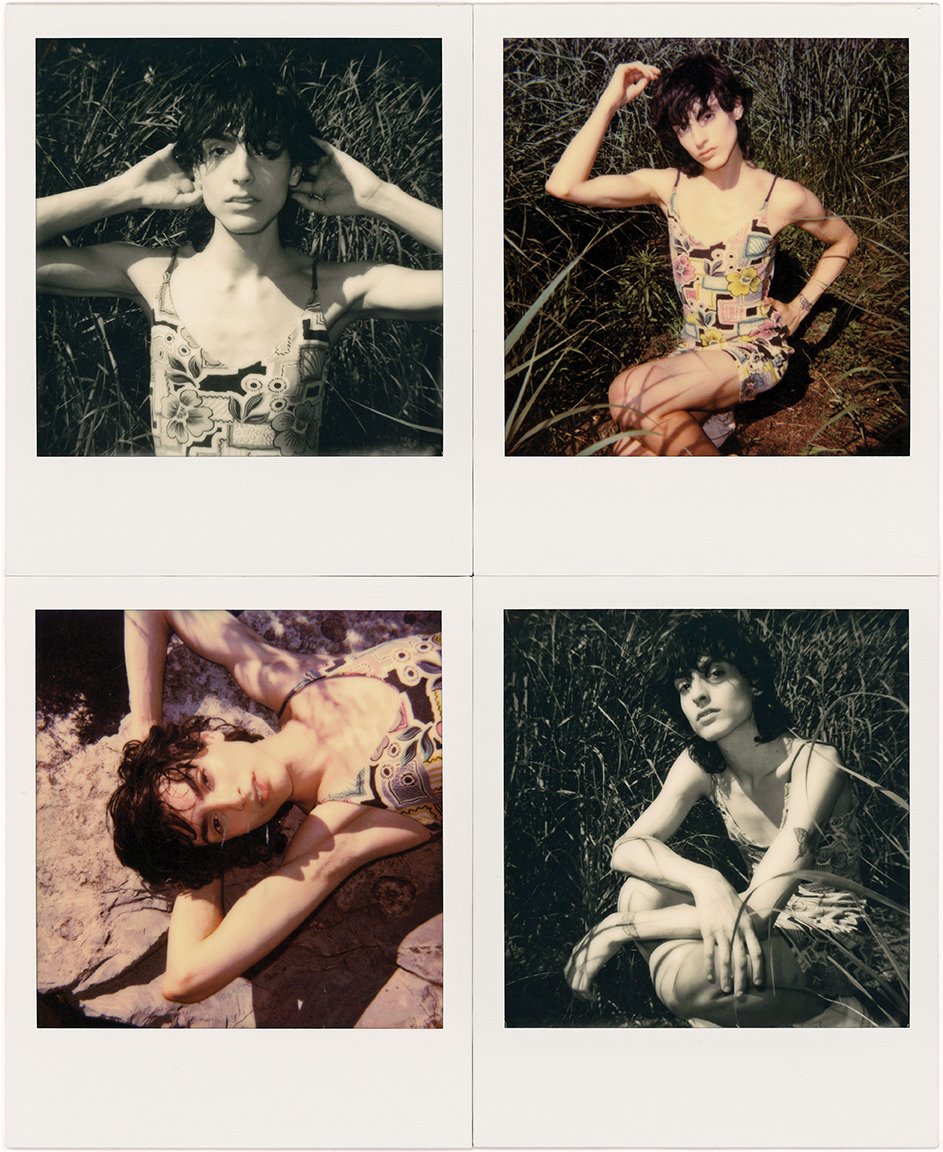
John, Palm Springs (2019).
A Polaroid is a unique photographic document. Each one is a material fact describing what the artist found interesting and beautiful to record. The use to which Slava Mogutin puts the instrument is to document his queer friends — artists, models, porn stars, art world luminaries, and people he encountered at Fire Island and Riis Beach.
The subjects share a common thread. They are often gender transgressive — many, as he describes them, are “people on the fringes of society, marginalized lives and souls that don’t have objective representation in contemporary culture.”
Slava is generous in his vision. His pictures, taken together, provide a quilt or mosaic, most often made of grids of four of the same subject to create a world which he uniquely inhabits. Slava acknowledges the artists he admires from whom he has drawn inspiration. Echoes of Andy Warhol, Peter Hujar, David Hockney, and David Wojnarowicz can be found within the body of work.
One finds both innocence and a sense of bravado in these portraits — a dare to the viewer to suspend judgement about what one sees and thinks about the subject. And when we suspend judgement, we see people representing a more diverse and broad humanity than we see in our casual ordinary experience.
This story was printed in GAYLETTER Issue 13, get a copy here.
Lisa and Luisa, Berlin (2019).
A Polaroid is a unique photographic document. Each one is a material fact describing what the artist found interesting and beautiful to record. The use to which Slava Mogutin puts the instrument is to document his queer friends — artists, models, porn stars, art world luminaries, and people he encountered at Fire Island and Riis Beach.
The subjects share a common thread. They are often gender transgressive — many, as he describes them, are “people on the fringes of society, marginalized lives and souls that don’t have objective representation in contemporary culture.”
Slava is generous in his vision. His pictures, taken together, provide a quilt or mosaic, most often made of grids of four of the same subject to create a world which he uniquely inhabits. Slava acknowledges the artists he admires from whom he has drawn inspiration. Echoes of Andy Warhol, Peter Hujar, David Hockney, and David Wojnarowicz can be found within the body of work.
One finds both innocence and a sense of bravado in these portraits — a dare to the viewer to suspend judgement about what one sees and thinks about the subject. And when we suspend judgement, we see people representing a more diverse and broad humanity than we see in our casual ordinary experience.
This story was printed in GAYLETTER Issue 13, get a copy here.
Brooke and Kyle, NYC (2020).
A Polaroid is a unique photographic document. Each one is a material fact describing what the artist found interesting and beautiful to record. The use to which Slava Mogutin puts the instrument is to document his queer friends — artists, models, porn stars, art world luminaries, and people he encountered at Fire Island and Riis Beach.
The subjects share a common thread. They are often gender transgressive — many, as he describes them, are “people on the fringes of society, marginalized lives and souls that don’t have objective representation in contemporary culture.”
Slava is generous in his vision. His pictures, taken together, provide a quilt or mosaic, most often made of grids of four of the same subject to create a world which he uniquely inhabits. Slava acknowledges the artists he admires from whom he has drawn inspiration. Echoes of Andy Warhol, Peter Hujar, David Hockney, and David Wojnarowicz can be found within the body of work.
One finds both innocence and a sense of bravado in these portraits — a dare to the viewer to suspend judgement about what one sees and thinks about the subject. And when we suspend judgement, we see people representing a more diverse and broad humanity than we see in our casual ordinary experience.
This story was printed in GAYLETTER Issue 13, get a copy here.
Cassils, LA (2019).
A Polaroid is a unique photographic document. Each one is a material fact describing what the artist found interesting and beautiful to record. The use to which Slava Mogutin puts the instrument is to document his queer friends — artists, models, porn stars, art world luminaries, and people he encountered at Fire Island and Riis Beach.
The subjects share a common thread. They are often gender transgressive — many, as he describes them, are “people on the fringes of society, marginalized lives and souls that don’t have objective representation in contemporary culture.”
Slava is generous in his vision. His pictures, taken together, provide a quilt or mosaic, most often made of grids of four of the same subject to create a world which he uniquely inhabits. Slava acknowledges the artists he admires from whom he has drawn inspiration. Echoes of Andy Warhol, Peter Hujar, David Hockney, and David Wojnarowicz can be found within the body of work.
One finds both innocence and a sense of bravado in these portraits — a dare to the viewer to suspend judgement about what one sees and thinks about the subject. And when we suspend judgement, we see people representing a more diverse and broad humanity than we see in our casual ordinary experience.
This story was printed in GAYLETTER Issue 13, get a copy here.
Durk Dehner, LA (2019).
A Polaroid is a unique photographic document. Each one is a material fact describing what the artist found interesting and beautiful to record. The use to which Slava Mogutin puts the instrument is to document his queer friends — artists, models, porn stars, art world luminaries, and people he encountered at Fire Island and Riis Beach.
The subjects share a common thread. They are often gender transgressive — many, as he describes them, are “people on the fringes of society, marginalized lives and souls that don’t have objective representation in contemporary culture.”
Slava is generous in his vision. His pictures, taken together, provide a quilt or mosaic, most often made of grids of four of the same subject to create a world which he uniquely inhabits. Slava acknowledges the artists he admires from whom he has drawn inspiration. Echoes of Andy Warhol, Peter Hujar, David Hockney, and David Wojnarowicz can be found within the body of work.
One finds both innocence and a sense of bravado in these portraits — a dare to the viewer to suspend judgement about what one sees and thinks about the subject. And when we suspend judgement, we see people representing a more diverse and broad humanity than we see in our casual ordinary experience.
This story was printed in GAYLETTER Issue 13, get a copy here.
Sophia Lamar, NYC (2019).
A Polaroid is a unique photographic document. Each one is a material fact describing what the artist found interesting and beautiful to record. The use to which Slava Mogutin puts the instrument is to document his queer friends — artists, models, porn stars, art world luminaries, and people he encountered at Fire Island and Riis Beach.
The subjects share a common thread. They are often gender transgressive — many, as he describes them, are “people on the fringes of society, marginalized lives and souls that don’t have objective representation in contemporary culture.”
Slava is generous in his vision. His pictures, taken together, provide a quilt or mosaic, most often made of grids of four of the same subject to create a world which he uniquely inhabits. Slava acknowledges the artists he admires from whom he has drawn inspiration. Echoes of Andy Warhol, Peter Hujar, David Hockney, and David Wojnarowicz can be found within the body of work.
One finds both innocence and a sense of bravado in these portraits — a dare to the viewer to suspend judgement about what one sees and thinks about the subject. And when we suspend judgement, we see people representing a more diverse and broad humanity than we see in our casual ordinary experience.
This story was printed in GAYLETTER Issue 13, get a copy here.
Leon and Samuel, Berlin (2020).
A Polaroid is a unique photographic document. Each one is a material fact describing what the artist found interesting and beautiful to record. The use to which Slava Mogutin puts the instrument is to document his queer friends — artists, models, porn stars, art world luminaries, and people he encountered at Fire Island and Riis Beach.
The subjects share a common thread. They are often gender transgressive — many, as he describes them, are “people on the fringes of society, marginalized lives and souls that don’t have objective representation in contemporary culture.”
Slava is generous in his vision. His pictures, taken together, provide a quilt or mosaic, most often made of grids of four of the same subject to create a world which he uniquely inhabits. Slava acknowledges the artists he admires from whom he has drawn inspiration. Echoes of Andy Warhol, Peter Hujar, David Hockney, and David Wojnarowicz can be found within the body of work.
One finds both innocence and a sense of bravado in these portraits — a dare to the viewer to suspend judgement about what one sees and thinks about the subject. And when we suspend judgement, we see people representing a more diverse and broad humanity than we see in our casual ordinary experience.
This story was printed in GAYLETTER Issue 13, get a copy here.
Nile, Fire Island (2019).
A Polaroid is a unique photographic document. Each one is a material fact describing what the artist found interesting and beautiful to record. The use to which Slava Mogutin puts the instrument is to document his queer friends — artists, models, porn stars, art world luminaries, and people he encountered at Fire Island and Riis Beach.
The subjects share a common thread. They are often gender transgressive — many, as he describes them, are “people on the fringes of society, marginalized lives and souls that don’t have objective representation in contemporary culture.”
Slava is generous in his vision. His pictures, taken together, provide a quilt or mosaic, most often made of grids of four of the same subject to create a world which he uniquely inhabits. Slava acknowledges the artists he admires from whom he has drawn inspiration. Echoes of Andy Warhol, Peter Hujar, David Hockney, and David Wojnarowicz can be found within the body of work.
One finds both innocence and a sense of bravado in these portraits — a dare to the viewer to suspend judgement about what one sees and thinks about the subject. And when we suspend judgement, we see people representing a more diverse and broad humanity than we see in our casual ordinary experience.
This story was printed in GAYLETTER Issue 13, get a copy here.
Genesis P-Orridge, NYC (2019).
A Polaroid is a unique photographic document. Each one is a material fact describing what the artist found interesting and beautiful to record. The use to which Slava Mogutin puts the instrument is to document his queer friends — artists, models, porn stars, art world luminaries, and people he encountered at Fire Island and Riis Beach.
The subjects share a common thread. They are often gender transgressive — many, as he describes them, are “people on the fringes of society, marginalized lives and souls that don’t have objective representation in contemporary culture.”
Slava is generous in his vision. His pictures, taken together, provide a quilt or mosaic, most often made of grids of four of the same subject to create a world which he uniquely inhabits. Slava acknowledges the artists he admires from whom he has drawn inspiration. Echoes of Andy Warhol, Peter Hujar, David Hockney, and David Wojnarowicz can be found within the body of work.
One finds both innocence and a sense of bravado in these portraits — a dare to the viewer to suspend judgement about what one sees and thinks about the subject. And when we suspend judgement, we see people representing a more diverse and broad humanity than we see in our casual ordinary experience.
This story was printed in GAYLETTER Issue 13, get a copy here.
Maxima Cortina, Hudson River Park, NYC (2019). In Memoriam 1995-2020.
A Polaroid is a unique photographic document. Each one is a material fact describing what the artist found interesting and beautiful to record. The use to which Slava Mogutin puts the instrument is to document his queer friends — artists, models, porn stars, art world luminaries, and people he encountered at Fire Island and Riis Beach.
The subjects share a common thread. They are often gender transgressive — many, as he describes them, are “people on the fringes of society, marginalized lives and souls that don’t have objective representation in contemporary culture.”
Slava is generous in his vision. His pictures, taken together, provide a quilt or mosaic, most often made of grids of four of the same subject to create a world which he uniquely inhabits. Slava acknowledges the artists he admires from whom he has drawn inspiration. Echoes of Andy Warhol, Peter Hujar, David Hockney, and David Wojnarowicz can be found within the body of work.
One finds both innocence and a sense of bravado in these portraits — a dare to the viewer to suspend judgement about what one sees and thinks about the subject. And when we suspend judgement, we see people representing a more diverse and broad humanity than we see in our casual ordinary experience.
This story was printed in GAYLETTER Issue 13, get a copy here.
1/10